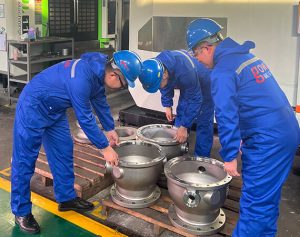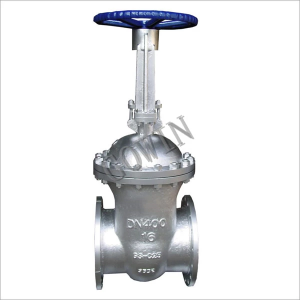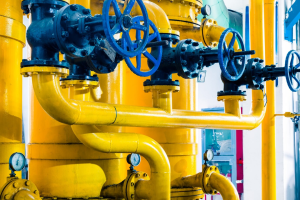Choosing the right ball valve is essential for safe and efficient pipeline operation. Two of the most widely used types are the floating ball valve and the trunnion mounted ball valve. Both are designed to control the flow of liquids or gases, but they differ in structure, application, and performance under pressure.
In this guide, we’ll break down the floating ball valve vs trunnion ball valve debate to help you decide which one fits your needs. We’ll also highlight Gowin’s API 6D certified valves, trusted in critical industrial applications worldwide.
What Is a Floating Ball Valve?
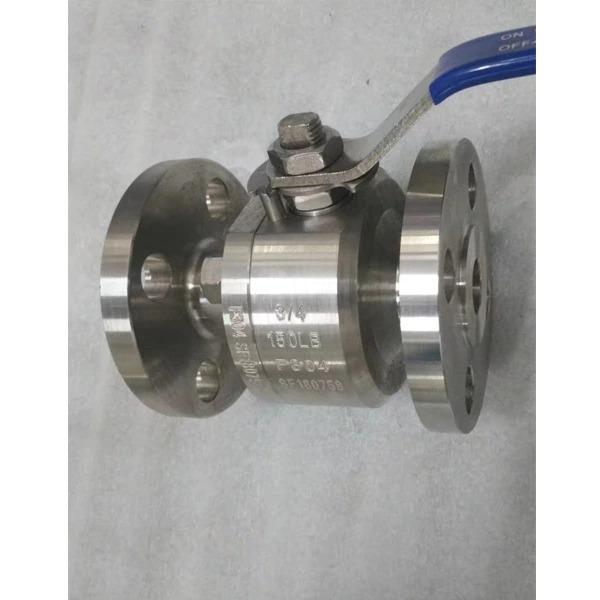
Alt-text: Forged steel floating ball valve from Gowin
A floating ball valve uses a ball that is not fixed but “floats” between two seats. The pressure of the fluid pushes the ball against the downstream seat to create a seal.
Key features of a floating ball valve:
- Ball is not anchored, it moves slightly under pressure.
- Sealing relies on line pressure pushing the ball against the seat.
- Generally used in smaller sizes (up to 6 inches).
- Simple design and cost-effective for moderate pressures.
Because of this design, floating ball valves are suitable for low to medium-pressure systems and applications where compact size and cost are priorities.
Example: Gowin’s Forged Steel Floating Ball Valve — API 6D certified, ideal for general industrial use.
What Is a Trunnion Mounted Ball Valve?
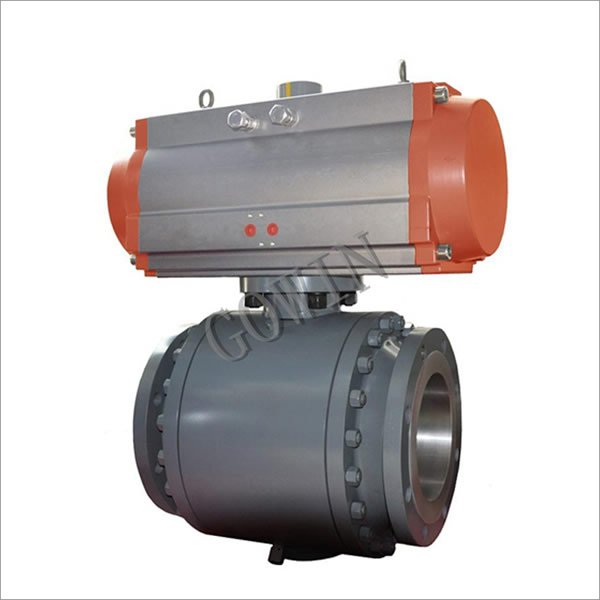
Alt-text: Side entry trunnion ball valve from Gowin
A trunnion mounted ball valve has a ball that is anchored at both ends with mechanical supports called trunnions. This design holds the ball in place and allows it to rotate without shifting. The seat moves toward the ball to form a tight seal, independent of line pressure.
Key features of a trunnion ball valve:
- Ball is fixed by trunnions, preventing excess movement.
- Seats are often spring-loaded, providing a constant seal even at low pressures.
- Designed for large diameters and high-pressure pipelines.
- Lower operating torque — easier to automate.
Example: Gowin’s Side Entry Trunnion Ball Valve — API 6D certified, built for heavy-duty applications like oil & gas pipelines.
Floating Ball Valve vs Trunnion Ball Valve: What’s the Difference?
Understanding the trunnion vs floating ball valve difference comes down to their internal structure and performance. Below is a deeper dive into how they compare:
Design and Sealing Mechanism
- Floating Ball Valve: The ball is free-floating. Sealing depends on pressure pushing the ball against the downstream seat.
- Trunnion Mounted Ball Valve: The ball is fixed with trunnions. Spring-loaded seats move to seal against the ball, independent of pressure.
Pressure and Size Handling
- Floating Ball Valve: Ideal for low to medium pressures and small to medium sizes (usually up to 6 inches).
- Trunnion Ball Valve: Designed for high pressures and large pipeline sizes, including very large diameters (above 6 inches).
Operating Torque
- Floating Ball Valve: Requires more torque to operate, especially as pressure increases.
- Trunnion Ball Valve: Requires less torque due to trunnion-supported ball — easier for automated or remote control.
Cost and Complexity
- Floating Ball Valve: Lower cost, simpler construction, easier to maintain.
- Trunnion Ball Valve: Higher cost, more complex but essential for high-performance needs.
Applications
- Floating Ball Valve: Water, chemicals, low-pressure oil & gas.
- Trunnion Ball Valve: Long-distance pipelines, high-pressure gas or oil, petrochemical, offshore and onshore critical pipelines.
Quick Comparison Guide:
| Feature | Floating Ball Valve | Trunnion Mounted Ball Valve |
| Ball Support | No support, ball “floats” in place | Ball anchored by top and bottom trunnions |
| Sealing Mechanism | Ball pushed by pressure to seat | Seats pushed to ball (independent of pressure) |
| Pressure Handling | Low to medium pressures | Medium to high pressures |
| Size Range | Small to medium (up to 6″) | Medium to very large (6″ and above) |
| Torque Requirement | Higher, especially as pressure increases | Lower — less force needed to operate |
| Leak Prevention | Reliable but may be affected by pressure fluctuation | Very tight shutoff, stable under varying pressure |
| Cost | More economical, simple construction | Higher cost, robust design |
| Best For | Water, chemicals, light oil, general industries | Gas, oil pipelines, high-pressure systems |
When to Use Floating Ball Valves
Floating ball valves are a cost-effective, simple solution for many systems. They’re the right choice when:
- Pipeline sizes are small to medium: typically up to 6 inches.
- Operating pressure is moderate: floating design seals well under line pressure.
- Cost is a key factor: simpler and cheaper than trunnion valves.
- Applications don’t require automation: manual operation is feasible.
Common industries using floating ball valves include:
- General water and wastewater pipelines
- Chemical plants (with non-corrosive media)
- Light oil and gas processing units
Gowin’s Forged Steel Floating Ball Valve meets API 6D certification, giving peace of mind for pipeline reliability and safety.
When to Use Trunnion Mounted Ball Valves
Trunnion mounted ball valves are built for more demanding applications. Choose this type when:
- Pipeline size is large — over 6 inches.
- High-pressure or high-temperature systems — where tight shutoff is critical.
- Low operating torque is necessary — important for automated or remote systems.
- Handling hazardous or flammable materials — trunnion valves offer superior safety and sealing.
Industries that require trunnion mounted ball valves:
- Oil & gas pipelines (including high-pressure transmission lines)
- Petrochemical plants
- Natural gas distribution networks
- Power generation plants (handling steam and cooling systems)
Gowin’s Side Entry Trunnion Ball Valve, API 6D certified, ensures safety and efficiency even in the most demanding operations.
Floating Ball Valve vs Trunnion Ball Valve: Pros and Cons
Here’s a quick breakdown of pros and cons to help decide between the two:
Floating Ball Valve
Floating ball valves are popular for their simplicity and affordability, but they come with specific pros and cons that should guide your decision:
Advantages:
- Compact and lightweight — easy to install.
- Cost-effective — great for tight budgets.
- Good sealing performance for moderate pressures.
- Easier to repair or replace.
Limitations:
- Not suitable for very high pressures.
- Requires higher torque to operate under pressure.
- Not ideal for very large pipeline diameters.
Gowin’s Forged Steel Floating Ball Valve overcomes many common floating valve issues with API 6D certification, making it safe and compliant for pipeline use.
Trunnion Ball Valve
When performance, safety, and size matter most, trunnion ball valves are the go-to. But they do require higher investment.
Advantages:
- Handles high pressures and large pipeline sizes effortlessly.
- Seats seal effectively even at low pressure, thanks to spring-loaded design.
- Lower torque operation — perfect for automated and remote-controlled systems.
- Suitable for hazardous and flammable media.
Limitations:
- More expensive to purchase and install.
- Larger, heavier design requires more space.
- More complex internals may require professional servicing.
Gowin’s Side Entry Trunnion Ball Valve is engineered for such challenging environments — offering API 6D certified assurance for oil, gas, and petrochemical pipelines.
Making the Right Choice for Your Operation
When comparing floating ball valve vs trunnion ball valve, the decision comes down to pipeline pressure, size, and the importance of automation and safety.
If you need a cost-effective, compact valve for moderate pressure, Gowin’s Forged Steel Floating Ball Valve is an excellent choice. But if you’re managing large, high-pressure, hazardous pipelines, Gowin’s Side Entry Trunnion Ball Valve offers the security, performance, and API 6D compliance you need.
Contact us today for more information!
Resources:
OPERATING TORQUE IN BALL VALVES-A REVIEW
Floating Ball Valves vs Trunnion Ball Valves

